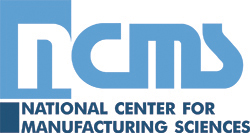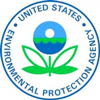Historical Articles
March, 1954 issue of Plating
Editorial
Specifications in the Plating Industry
IN THE PRODUCTION of the tremendous volume and variety of consumer and capital goods there is a considerable and valuable contribution made by the plating and metal finishing industry. This wide use of plated and allied finishes attests to the vital importance of the industry in the national production pattern. The high standard of quality that the industry has been able to deliver has played an important part in the acceptance of such coatings.
It is here that the work of the AES, in conjunction with its own Research program and that of other technical groups, has promoted the use of quality coatings on plated parts. Analytical and testing methods, specifications and recommended practices have been issued and many of them have been published in the pages of this journal.
This valuable body of ”know-how,” that is readily accessible to any supplier or purchaser of plated ware, is overlooked at times. One hears of instances where a plated finish has not given the necessary service. In part, such a situation has been brought about by producers who have revised their Service requirements to meet the pressure of competitive business conditions. Such a finish, bought essentially on the basis of price, only serves to discredit the producer and the plating industry.
In a recently reported instance, where price was never a consideration, the supplier of a precious metal finish was not given full engineering data on the requirements of the coating in service. The specified coating thickness was provided, yet the coating failed to perform as needed in an expensive electronic device.
With such examples in evidence, it is felt that a review ought to be made of specifications along with their individually tailored variations. Thickness, smoothness, porosity and color alone may not be enough. There are newer engineering requirements calling for plated coatings with newer service characteristics. Far instance, in the electronics industry, one which has grown in a few short years by several billions of dollars, there is a great need for plated coatings requiring special behavior under vacuum, and at high temperatures. Here, a careful review of specifications will again result in a valuable addition to the fund of specification ”know-how” which in the past has helped to make plated products look better, serve better and last longer.
—Al Korbelak
 |
 |
 |
 |
 |
| Home | Subscribe | Regulations | Compliance Assistance | News | Resources | Resource Locators | Directories | Online Training | About | Search | NASF.org |
The information contained in this site is provided for your review and convenience. It
is not intended to provide legal advice with respect to any federal, state, or local regulation.
You should consult with legal counsel and appropriate authorities before interpreting any
regulations or undertaking any specific course of action.
Please note that many of the regulatory discussions on STERC refer to federal
regulations. In many cases, states or local governments have promulgated relevant rules and
standards
that are different and/or more stringent than the federal regulations. Therefore, to assure full
compliance, you should investigate and comply with all applicable federal, state and local
regulations.

